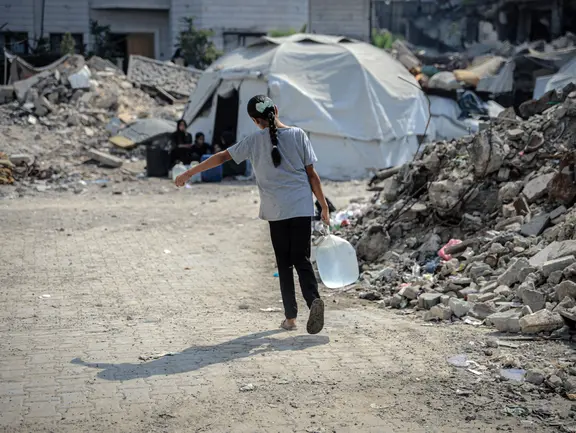World risk overview 2024: urgent need for action in times
The new world risk in 2024 of Bündnis Development helps (Beh) and the Institute for Peace Security Law and Humanitarian International Law (IFHV) calls for new strategies in crisis prevention and risk management. Under the focus "multiple crises", the report impressively illustrates how climate change, geopolitical conflicts and health crises are closely linked and what far -reaching consequences these crises have for global security and development.
The world in the spell of multiple crises
Extreme weather events, wars and new health threats such as Polio and MPOX: Global crises are omnipresent and are increasingly overwhelming international auxiliary systems. "Our world is in the spell of multiple crises. They reinforce each other and create new, threatening challenges for global security. The world risk overview in 2024 shows alarmingly clearly: The community of states must now be determined and immediately act," emphasizes Dr. Ilona Auer Frege, Managing Director of Bündnis Development helps. "Our traditional crisis coping is no longer sufficient for multiple crises. We urgently need innovative and integrated approaches in disaster risk management," adds Dr. Katrin Radtke, Senior Researcher at the IFHV at the Ruhr University Bochum and scientific director of the report.
Global risks on the advance
The World Risk Index 2024 evaluates the disaster risk for 193 countries and captures over 99 percent of the world's population. While the well -known risk -wing spots are still in America and Asia, the report shows that the risk of long -term countries is shifting to countries with climate -sensitive exposure and high vulnerability.
Germany improves easily in the ranking and is 98th with a risk value of 4.1, but remains in the global midfield. This underlines the need for comprehensive efforts to minimize risk.
A special evaluation in the form of new map material also shows that the risk profile of many countries is not only shaped by extreme weather events, but increasingly also by persistent conflicts. Regions in Central and North Africa, Central and South America as well as South Asia are particularly affected, where conflicts further exacerbate the already high risk values.


